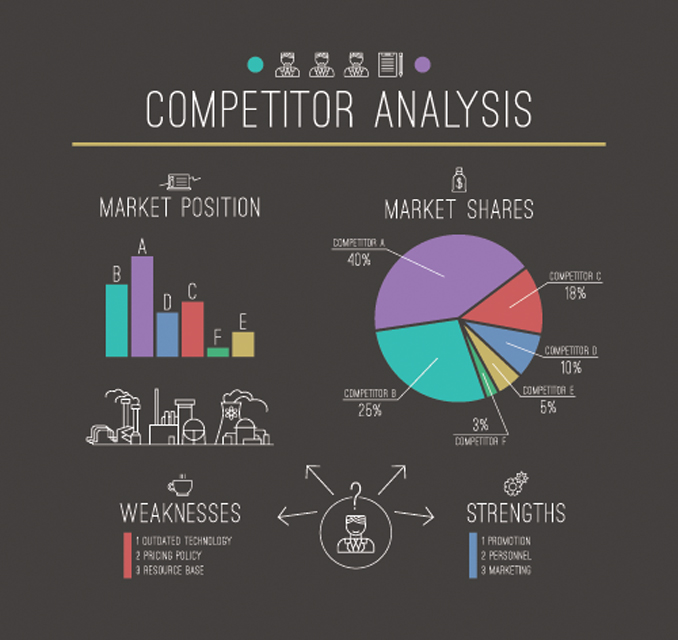If you decide to go to your bank and secure a business loan, you need preparation. To plead your case, you need to prepare a business plan, complete with financial records and projections. If you’re opening a new shop, you’ll also need an estimate of your startup costs. And as important as a business plan is in securing a business loan, it’s just as critical of a roadmap for how you will run your company.
According to the business axiom, failing to plan is planning to fail. That’s only good advice if you take it.
Unfortunately many new small business owners never take it.
Fewer than 45 percent of small businesses create a formal business plan. Of those that do, about two-thirds of their business owners acknowledge the plan contributed to the success of their companies.
Not having a business plan is one reason that 20 percent of startups fail within the first year of operation. That’s really not too bad when you consider that, after five years, half of the businesses have closed their doors. By the tenth year, 90 percent have failed.

Your business plan is your blueprint for creating a successful business. Developing a comprehensive business plan will address key opportunities and threats. It also requires that you understand your strengths and weaknesses as well as those of your competitors. By creating a comprehensive business plan outlining your strategies and tactics, you’ll maximize your chances for success.
Taking the time to develop a solid business plan also helps in securing a business loan. Lenders analyze an applicant’s business plan to determine the chances of a new venture succeeding. Without a sound plan, the odds that you’ll get approval for a loan are slim.
A business plan should answer how your shop will overcome the key reasons for failure (marketing problems, financial problems, and personnel problems).
In the financial section of your business plan, lenders not only want to review several years of past financial statements, they also want to evaluate future projections.
The sales and marketing section is critical because problems in this area account for the majority of business failures. Banks want to examine your market analysis, product and service offerings, sales and marketing plan, and threats from competition.
The third most important segment of your business plan is your key personnel. This should list the primary managers in your shop, their responsibilities, and summaries of their experiences.
Based on the information in your business plan, your bank will determine the likelihood that your shop will be successful and whether or not you’ll have problems repaying the loan.
As you’re composing your business plan, think of it as your company’s resume to secure a loan. So write your business plan to address the Five Cs of Business Credit: Capacity, Capital, Character, Collateral, and Conditions.
You can find templates for business plans on the Internet. Most of these formats are very similar in that each is divided into basic company operations. Let’s take a look at these typical sections.
Executive Summary. The executive summary condenses your plan to a one-page abstract. It is similar to a lawyer’s opening statement at the beginning of a trial. Keep it short and sweet. Save the details for the body of the business plan.
In this summary, briefly describe your company and your products and services. Explain your target market and the unmet needs of your prospects. Your summary also describes your primary competitors, what differentiates your shop from these rivals, and why your business will be successful.
With respect to your loan request, spell out how much money you need, what you need the money for, and how much time you need before you realize a return on the investment.
Business Description. Your company description provides an overview of your business—who you are and what you do. In a few sentences, you should concisely cover the basics. You can provide the details in the remainder of the plan.
The basics should include:
- The name under which you operate in your state;
- The business structure (whether it is a sole proprietorship, partnership, LLC, or corporation);
- A list of your company’s key managers;
- Your mission statement;
- Your target market;
- The range of products and services that you provide; and
- Your company goals.
Market Analysis. The market analysis section of your business plan demonstrates to lenders that you know your market. What’s more, the opportunities are significant enough to sustain your business.
In delineating the opportunities, you should cover the following topics:
- Market potential (quantify the size of the current market size in dollars and cents and provide a projection for future market growth, which you could base on industry studies);
- Target market (describe your ideal target customer, such as “private carriers with fleets less than fifty vehicles”);
- Unmet market needs (describe any products and services your competitors do not provide then explain how your shop satisfies any of these unmet market needs); and
- Barriers to entry (list your skills that prevent a new competitor from doing what you do, thereby protecting a lender’s investment).

Competitor Analysis. Writing the competitor analysis section of your business plan requires research, which you can do initially through the Internet. For more detailed information, vendors are a good source. (Caution: Be careful in sharing information about your shop with talkative salespeople.)
You can also learn about your competitors’ production capabilities, pricing, and marketing efforts from employment interviews and from talking to their customers. After identifying their strengths and weaknesses, describe your strategy for competing with these competitors.
Sales Analysis. To accompany the reporting of sales revenue in your income statements, you should chronicle your actual month-by-month sales performance against your goals. Your business plan should also include a sales budget for the upcoming years based on the trends in past performance. Other metrics that you should track and include in your business plan include the number of accounts added to your database; a 30-60-90-day rolling forecast; and the number of face-to-face sales calls from month-to-month.
You should use the data of past performance to explain the opportunities within different segments of your business, such as fleet graphics or tradeshow graphics. In your report, you should also provide any insights about product offerings, where you are under-performing.
Use of graphs in your sales analysis can demonstrate your awareness of your market, your customer base, and your opportunities, as well as an understanding of the hurdles that confront your shop.
Based on your sales analysis, you should also describe any modifications to your sales and marketing strategies to address any changes in buying behavior, competitive challenges, or impending economic storms on the horizon. Keep in mind that a company’s inability to recognize or respond to changing market conditions is one of the main reasons that new businesses fail.
Marketing and Sales Plan. More than half of all business failures result from poor marketing. That’s why market research is so important. In the “sales and marketing” section of your business plan, you need to demonstrate a thorough understanding of your market and how your products and services will fulfill the unmet needs of your prospective customers.
Financial Analysis. In qualifying for a loan, bankers will concentrate on the financial analysis portion of your business plan. This section should include three-year financial projections as well as historical records covering the past three to five years.
Lenders use this information to judge the financial strength and profitability of your shop as well as to determine your ability to repay a loan. This section of your business plan should include three key statements—Income Statement, Balance Sheet, and Cash Flow Statement.
The Income Statement helps lenders, as well as company owners, evaluate the performance of the business against its goals and past performance. It summarizes your shop’s income and expenses over a period of time. The difference between the two is your profit or, in some cases, your loss: Revenue – Expenses = Profit or Loss.
The income statement provides measurements in key areas: sales, cost of goods sold, gross profit margin, shop and administrative expense, returns and allowances, operating margin, and net profit.
As a management tool, a shop owner can use this information to determine the performance of his or her managers in various areas of the business, including sales, administration, costing and production. Variances from one time period to another in these key areas can help owners spot trends as well as trigger warnings of potential problems.
A historical record of growth in sales and profit along with responsible control of expenses provides lenders with critical information needed in the loan approval process. Lenders will look at trends in annual revenue as a key indication of the strength or weakness of your business.

Balance Sheets are typically computed at the end of a financial period. It provides a snapshot of your finances at a single point in time versus an accounting of what transpired over a financial period.
The balance sheet consists of three parts: assets (on the left-hand side), liabilities (on the right-hand side), and equity. Assets are what you own. Liabilities, on the other hand, are what you owe. The difference between assets less liabilities is your equity: Assets = Liabilities + Equity. Assets are listed on the left-hand side of the balance sheet. An asset could be cash or a cash equivalent. It could also be the real estate the company owns, office equipment, furniture, accounts receivables, inventory, or shop equipment.
In recording an asset on your balance sheet, its cost or what you paid is shown rather than its market value or what you could sell it for.
Assets are listed in two categories. Current assets are what you can turn into cash within a year. This includes cash, receivables and inventory. Noncurrent or fixed assets are those items, which you will not convert into cash within a year. These are assets that you will use for more than a single accounting period. Fixed assets include office equipment, vehicles, real estate and shop equipment. These assets are often referred to a PP&E (Property, Plant and Equipment).
Liabilities and equity are listed on the right-hand side of the balance sheet. The total of liabilities and equity must equal assets. That way, each side of the balance sheet balances out.
Liabilities include:
- Accounts Payable;
- Wages Owed;
- Interest Owed on Loans;
- Taxes Owed; and
- Benefits Payable.
Just as there are different categories of assets, there are different classifications of liabilities. Current liabilities must be paid within a year. Long-term liabilities, on the other hand, are paid over a longer period.
For both business owners and lenders, the balance sheet is the financial canary in the coal mine. If the ratio of your liabilities greatly outweighs your assets, your business is headed for a bad day at Black Rock. To avoid bankruptcy, you need to take drastic corrective action.
Generally when assets are greater than liabilities, your business is growing. On the other hand, when liabilities are greater than assets, your company is dying.
As you review your balance sheet, you should evaluate your business’s debt-to-equity ratio. This financial key performance indicator ascertains your company’s capability to pay its debts. Total long-term and short-term debt/Total owner equity = Debt-to-equity ratio.
Two other line items that lenders will focus on are cash and receivables. The balance sheet helps lenders determine if you have enough cash on hand to pay your interest expense (listed on your income statement). Lenders may view high receivables as a red flag indicating a collections problem. This is why a bank may want to see an aging report. Generally, unpaid balances should not exceed ninety days.
If your business does not have enough cash, lenders want to determine how reliant you are on generating a steady stream of sales to pay your bills. If your shop depends heavily on monthly sales to cover your expenses, you may not be able to withstand competitive challenges or downturns in the economy.
Caveat Emptor: If you are taking out a loan to buy a franchise or an existing business, you might encounter the term “goodwill,” as you review the assets on a balance sheet. For most of us, this is a confusing financial concept. In many cases, some of what you are purchasing is not something tangible, such as production equipment or real estate. Instead some of what you may be paying for is an intangible asset called “goodwill.”
An intangible asset is an asset that you cannot sell but nevertheless has some value. This could be the brand name of a franchise or its reputation in the marketplace. If you are buying another shop, goodwill could also be the value of its customer base or an experienced workforce.
The problem with an intangible asset such as goodwill is that it is difficult, if not impossible, to quantify. That means, that in the event of a business failure, how can you liquidate a brand name or customer list?
The movement of cash in and out of a business is called cash flow. According to many studies, problems managing cash flow result in more than 75 percent of business failures. A Cash Flow Statement provides a lender with an overview of how well you manage your cash.
The standard format for a cash flow statement summarizes financial transactions within your shop. The statement divides these transactions into three different financial categories:
- Operating transactions (the most important part of any cash flow statement, it covers the day-to-day inflows and outflows of cash within your business);
- Investing transactions (activities covering the purchase and sale of long-term assets, such as buying or selling of a boom truck, computers, furniture, or a digital printer); and
- Financing transactions (activities involving long-term liabilities, such as raising money through business loans or repayment of debt principal).

Funding Request. You should write the funding request as a standalone document. Even though you have already provided a business description in your business plan, you should recap it in this section. Your description should explain your target market, business structure, standing in the market, and current financial position.
Your funding request should describe why you need the loan and explain how it will improve your business. To help your chances of loan approval, try to quantify the expected return on investment. If you plan to use the money for various things, provide an itemization.
Addendum. At the end of your business plan, you can include appropriate additional information. This may include support materials that your bank has requested, such as tax returns, real estate documents, and marketing materials.
Conclusion
As important as a business plan is as a blueprint for running a successful shop, it is also a critical tool in qualifying for a loan.
Write your plan with the intention of persuading a lender that you’re very knowledgeable about your market and the competition that you face. What’s more, you have a thorough plan that satisfies an unmet market need that ensures the success of your business.
According to Greg McKay, vice president of supplier Earl Mich Company, preparing a business plan is essential for any new business. “It improves your odds for success, and it helps you avoid failure,” he says.
To this end, McKay reminds us of the “six Ps:” Proper Prior Planning Prevents Poor Performance.
—Jim Hingst











